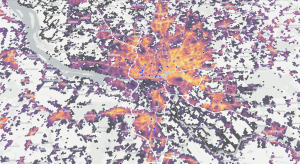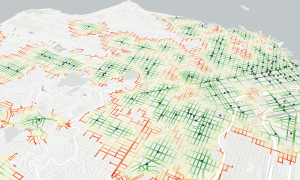
Finding the right retail location doesn’t happen by chance. With so many factors to consider, from location scouting to customer analysis, an expansion manager can be the driving force to find the perfect place.
As retail experts, expansion managers have the industry contacts, the expertise and the technology to help store owners make an informed decision about where to put their business, whether it’s their first shop or your next. They can also take care of all the contract negotiations, providing retailers with a seamless turn-key solution that works around their business’ needs.
To bring more light to the work of an expansion manager and find out how they discover the best retail locations for their clients, we spoke to Samuel Vogel, owner of retail and real estate consultancy The Bird.
What is a retail expansion manager?
“I work in the field of real estate search,” explains Samuel. “I’m scouting for the right retail objects. Additionally, I examine a building’s technical specifications. I make a full location analysis. I also take care of branch network expansion. Everything really, up until the handover of the keys.”
Samuel Vogel advises clients such as shopping mall manager Unibail-Rodamco-Westfield and safe deposit box company Trisor. He has worked for several other retailers, including VIU Eyewear and bakery chain Zeit für Brot.
For Samuel, knowing his client’s customers is key to helping them achieve their retail goals. “My first question is always ‘who is your customer’,” he says. To give us an example, Samuel mentions one of his clients, Trisor, who rents out deposit boxes to people who want to secure their valuables away from home.
“This service is about the feeling of security, because the service is deposit boxes. Therefore, locations should be reachable 24 hours a day and have good parking. Furthermore, you want to know where there is a high density of potential customers, what their incomes are and what kind of products they buy. This helps me to find the optimal locations,” says Samuel. “The more questions you ask about customers, the closer you get to identifying the optimal locations, and the more you map their needs, the easier it is to find the right location.”
The building and its location
What the retailer sells and how it sells it is another important factor, whether that’s a product or a service. Some companies, like jewellers, benefit from a premium façade to convey the feeling of luxury, whereas a fitness chain would benefit from a solid structure that can handle heavy gym equipment, while a restaurant would seek an acceptable level of sound insulation and air ventilation. In the case of Trisor, its security deposit boxes are very heavy, so Samuel needed a building that could handle this weight. Again, with Trisor, the front of the building has to convey a feeling of security if a customer is to trust placing gold bars or other valuables in there.
“A visit to the places is a decisive factor,” explains Samuel. “I have to see the building and develop a feeling for the place. An image in a brochure can be perfect, but if something near the place doesn’t match the brand and product, that building could go off the list.”
Dealing with the landlord
The customers’ needs and the brand’s image determine the requirements that a location should meet. Samuel uses this list to request real estate options from his network of property brokers, and make a preselection of suitable locations. When retail space could be a good match, he will always have a visit in person.
“One of the important tasks of an expansion manager is to clearly explain to the agency or owner who might not be familiar with the product, what we are looking for,” says Samuel. “The landlord wants a reliable tenant with long-term plans. It is therefore vital to give the landlord a good introduction to the retailer’s business. If they don’t understand the product, they won’t accept me as a tenant.”
Once Samuel receives the real estate offers, he will rank them in terms of best fit for the retailer based on their needs and of course their customers’.
The role of location technology
Knowledge is power, and when it comes to retail, accurate geo-referenced information and location data is crucial, from demographics of potential customers to footfall, as Samuel explains. “Firstly, I take a macro perspective: I look at the whole country and cities that could be suitable for my client. If it is a new business setting up locations, I still have an ‘empty’ map, so to speak. The logical step is to look at urban areas and big cities and see where the biggest potential is. Secondly, after I have identified specific locations, I examine these places with location data to see whether that site truly is a good match for the retailer.
“With Trisor, for example, I analyzed how many banks are located around a potential new site, and more specifically, how many deposit boxes are likely to be on offer there. We can’t get exact figures about the number, but I can make an analysis to estimate supply and demand. To do this, I used Targomo’s technology.”
With Targomo, Samuel was able to see how many banks and gold shops were located in this area so that he could make a supply and demand analysis to see if there is a need for this service. “The exciting thing about Targomo’s analytics platform is that it allows me to combine external data with internal data,” he says. “The more location-referenced data I have in the platform, TargomoLOOP the more accurate the analysis becomes. The more I know about my business, the better I can position myself in the market. TargomoLOOP allows you to scientifically compare different locations based on data and evidence.”








